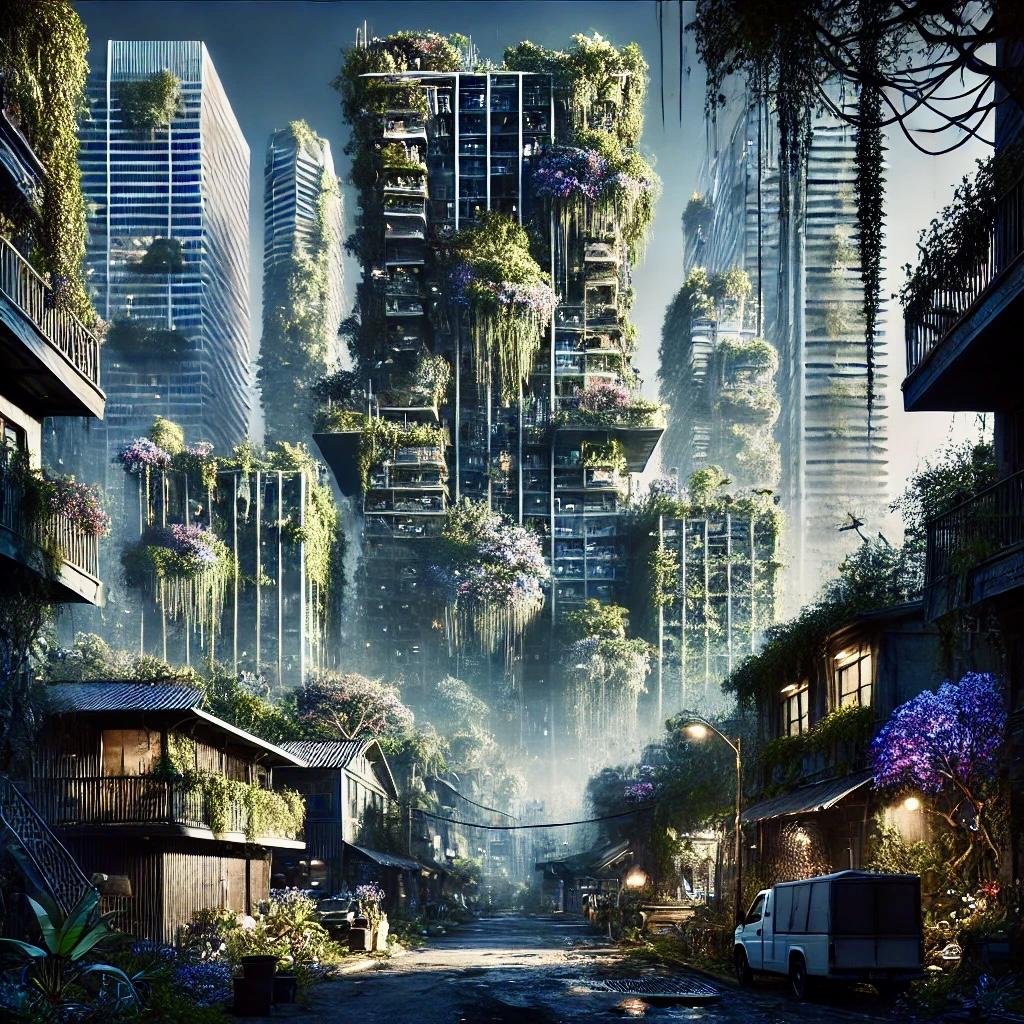
It was the year 2029, and Austin, Texas, had undergone a transformation so strange, it left a mark on the map of urban history like a scar on a forgotten soul. The city’s towering buildings, once monuments to concrete and glass, had become living creatures—each one draped in greenery as if nature herself had reclaimed the urban jungle.
The city council’s move back in 2023 was radical, some said revolutionary. They had passed what would later be called The Vertical Green Law. And like all stories that smelled of rebellion and fresh leaves, it was born from a dirty city choking on smog and heat. They told us blank walls and fences were dead. Illegal, even. Every vertical surface from downtown to the farthest suburbs would now be crawling with vegetation.
It started small, a collaboration between environmental radicals, some weary urban planners, and a council full of politicians with too much to prove. They said it was for the environment, for the people. I say they did it for power. A city draped in green would never be forgotten.
And they weren’t wrong.
Austin became something else, a city lost in the vines, green tendrils wrapping around every building like it was holding onto hope. The old facades were hidden behind wildflowers, Texas shrubs, and vines that reached to the sky. The fences? Gone, replaced by vegetable gardens where the community could pick their own food, if they dared to stray from the grid of corner markets.
The city’s heat dropped by a degree or two, but the air was sweeter, easier to breathe. Pollinators buzzed through downtown like ghosts of a time before asphalt ruled the land. Birds nested in places where only pigeons once dared to tread. It was, they said, beautiful.
But the beauty came with a price.
Retrofitting the city was no easy feat. The old buildings fought back, their crumbling mortar and faded bricks resisting the pull of the green tide. But eventually, they succumbed. A new Austin was born—one that looked less like a city and more like the forgotten dream of some eco-anarchist. And once it was done, the world took notice. Cities everywhere drafted similar laws, copying what had started in Austin.
But the thing about revolutions, even green ones, is that they’re messy. The city had changed, sure. It was vibrant, alive in ways no one could’ve predicted. But beneath the leaves and petals, Austin was still Austin. The old problems—crime, corruption, inequality—were still there, just harder to see. Hidden in the shadows of those very green walls they had erected to save themselves.
Austin had become a beacon, they said. A city where nature and man lived together in harmony. But anyone who knew better could see it for what it was: a beautiful lie, with ivy crawling up the walls and darkness still lurking beneath.
And so it goes in Austin, where the grass is greener, but the streets still bleed concrete.